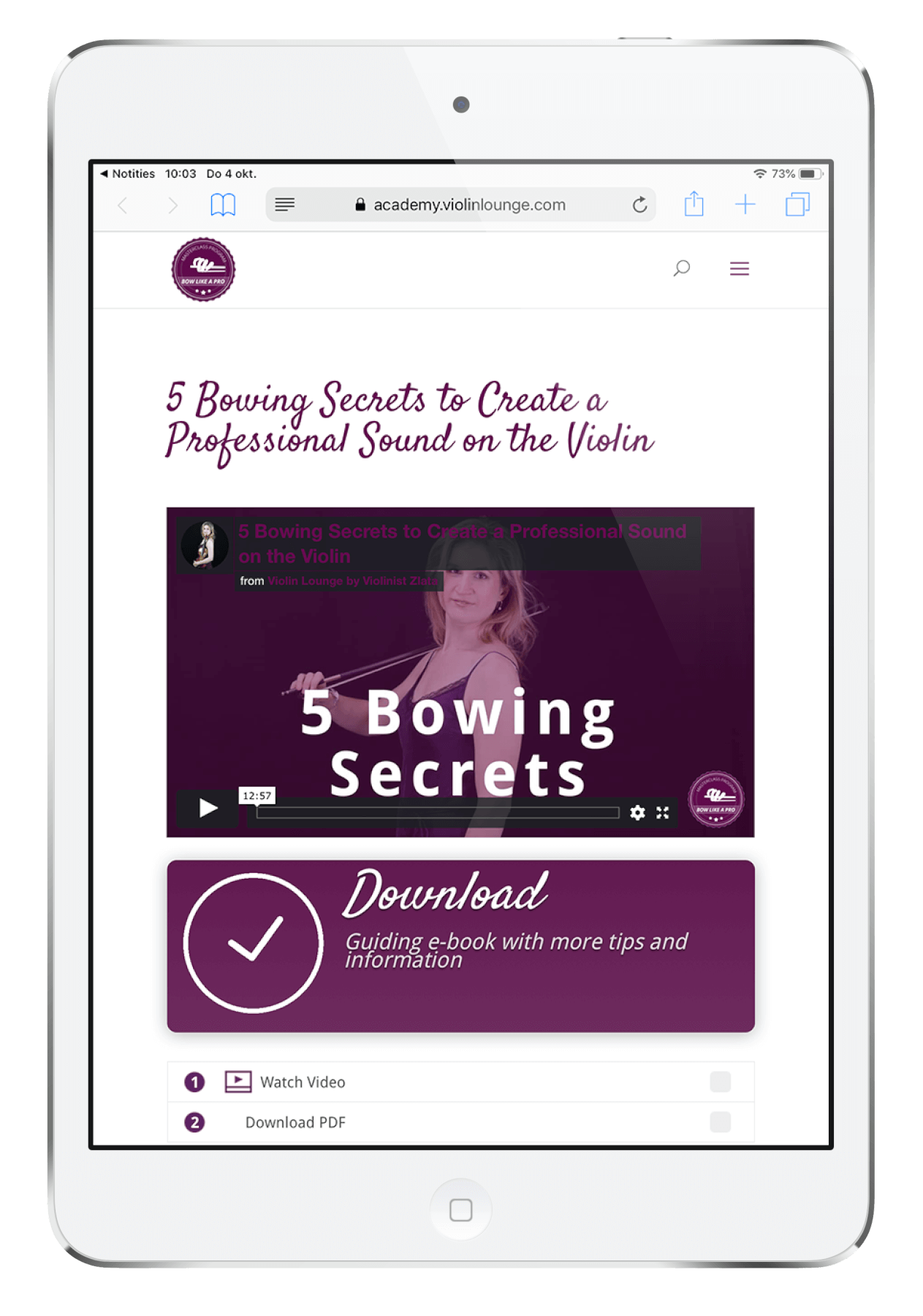Up Bow or Down Bow: What Violin Bow Direction to Choose? | Violin Lounge TV #300
If there’s no indication of up bow or down bow in the sheet music, what’s the rule to follow?
In this video I explain how to choose between up bow and down bow:
What are up bow and down bow?
Down bow is the bow direction from frog to tip. The player pushes the bow down (to the right), away from the left shoulder.
Up bow is the bow direction from tip to frog. The player pulls the bow up (to the left), toward the left shoulder.
This doesn’t matter where on the bow you start. You can play up bow as well as down bow at the frog, in the middle and at the tip.
How are up bow and down bow indicated in sheet music?

Down bow is indicated by the mark above the notes in the picture on the right. You can easilly remember this as it represents the frog and the down bow movement goes from frog to tip. However, this doesn’t necessarily mean you have to start at the frog. It just indicates the bow direction.

Up bow is indicated by the V marks above the notes in the second picture. The V looks a bit like the tip of your bow. The up bow movement goes from tip to frog. Just as the down bow mark, this doesn’t tell you something about the bow division. It just indicates the bow direction.
What’s the rule to follow when there’s no indication of up bow or down bow?
In general a piece starts down bow. Most bars start down bow.
You can think of up bow and down bow as breathing in and breathing out. You’ve perhaps noticed already that both have a different sound. On the down bow you naturally have a decrescendo, while on up bow you naturally have a crescendo. Of course if necessary you can create a regular sound by compensating this with the weight you put into your bow.
As down bow and up bow have a different sound, it’s important to make a conscious choice between the two
When your piece starts with an up beat, this is like breathing in, so you start with an up bow and play a down bow on the first beat of the bar after the up beat. In the video above I show you an example.
Improve your violin bowing technique
Enjoy my FREE mini Masterclass 5 Bowing Secrets to Create a Professional Sound on the Violin

Hi! I'm Zlata
Classical violinist helping you overcome technical struggles and play with feeling by improving your bow technique.
The choice of bowing is something very personal
It’s not carved in stone. You’ll see different performers and orchestra’s use different bowings for the same piece. Of course orchestra players have to be consistent in the bowings they choose and the principal decides.
Bowing is to a violinist what breath is to a singer
You’ll notice that the choice of bowing helps you express yourself in music and tell the story you want to share. The bowing you choose also depends on what bowing you did before that and what bowing you’ll do after that in the piece you play.
Play and experiment with it and let me know in the comments below what differences you notice!
14 Comments
Trackbacks/Pingbacks
- FREE Violin Lesson #9 for Beginners | BOW DIVISION - Violin Lounge - […] might be wondering when to start up bow or down bow. Watch this lesson all about bow […]


I’m happy to hear you say that sometimes bow direction is a personal choice.
Thanks for this informative video, Zlata.
Thanks for watching, Denise!
“The story that you want to express with your music.” As someone who plays fiddle tunes, I like that! Thank you for your generous and heartfelt support.
Thank you for your kind words, Janie, I think the story you want to tell is they nr 1 thing in music… all technique is just to serve that purpose. And this comes from a classical violinist 😛
Hi Zlata,
Thanks for your useful video. That helps me a lot.
Just a quick question. Do you know if bowing rule is same in Cello ? I mean choosing down bow or up bow iss personal when playing cello? (when there’s no indication of up bow or down bow)
Yes, it is!
thank you so much it helped
Glad it’s helpful, Madison!
Hi, this helped me a lot. Now, I know what to bow on my piece of music!
Awesome!
Are there any tips for deciding bow direction in 3/4 time? I have a much harder time deciding when the accents don’t go with the measure/beat like they do more easily in 4/4 time. Thanks so much!
This all depends of the musical context, but down up up could be a solution to have a natural down-bow on the first beat.
So… here’s a somewhat related question. On a piano, we usually read barred eights/sixteenths as a legato, even if none is specified. Does that rule ever applies to violin? Should I play barred sixteenths slurred but (double) crochet notes detache? Or is everything really detache unless something tells me otherwise?
There’s a musical legato, like you play on the piano, and there’s a bowing technique legato, like you play on the violin. One can for example play a whole passage with a legato sound on the violin, but still have several bow strokes. These are two different things. Indeed on the violin detaché is the default bow stroke, however not all notes without any symbols are detaché. In general a slur means legato.